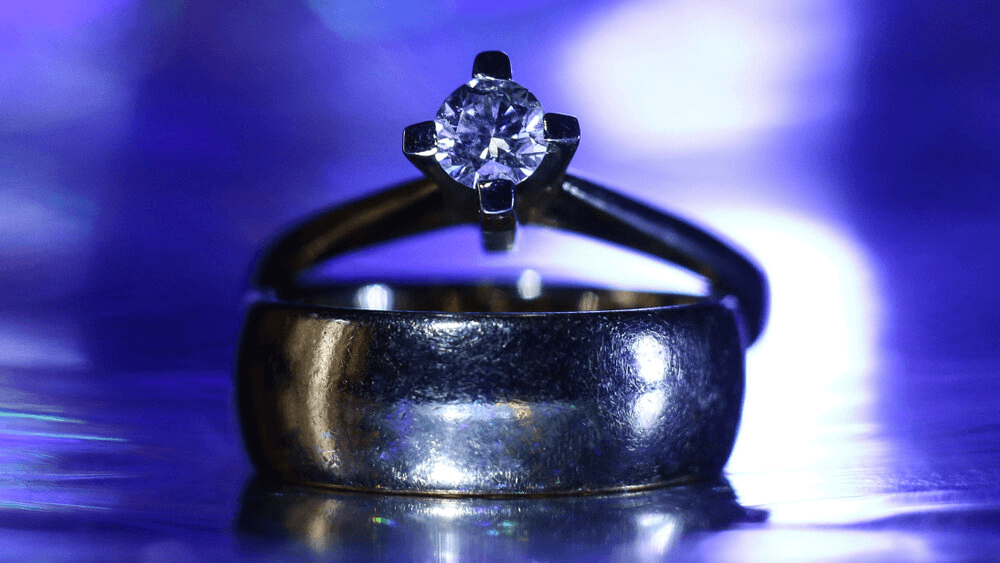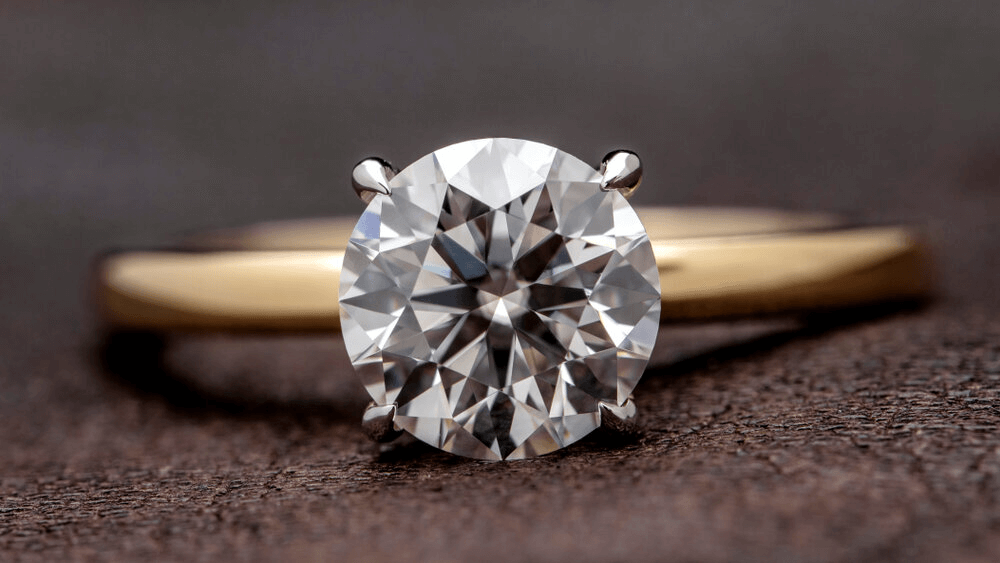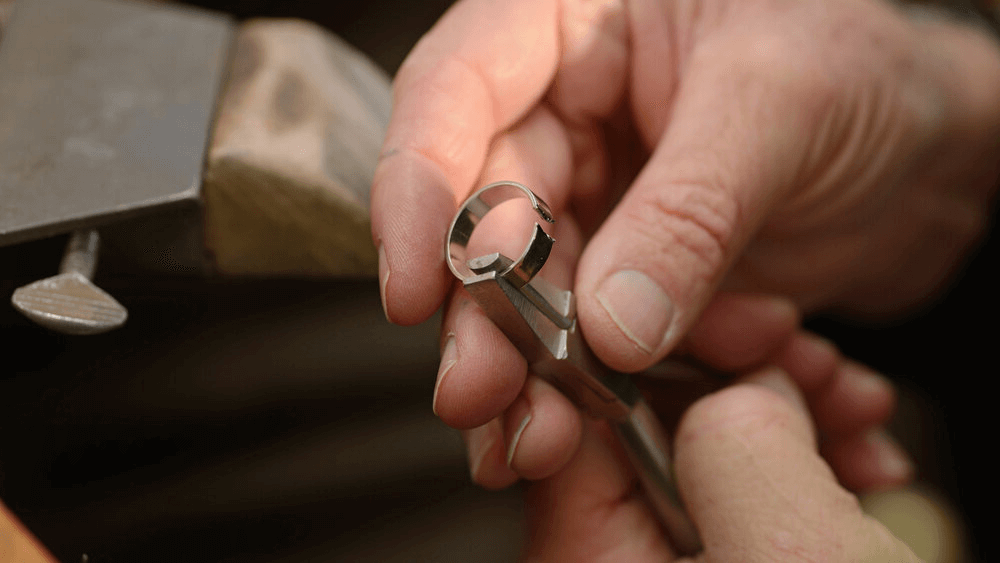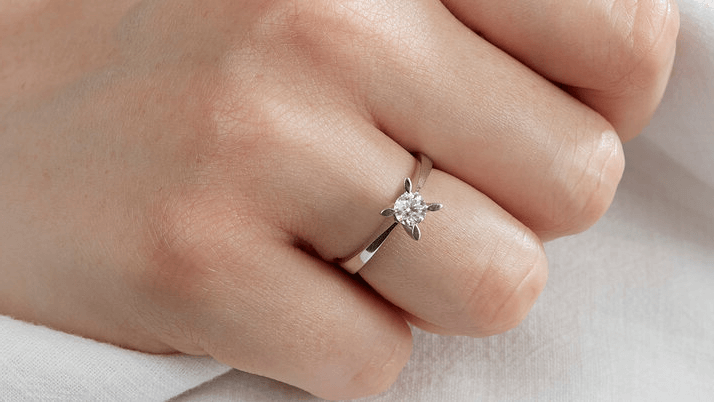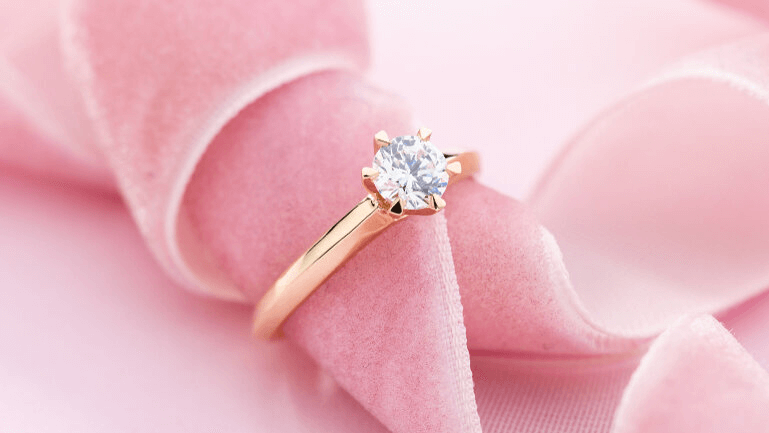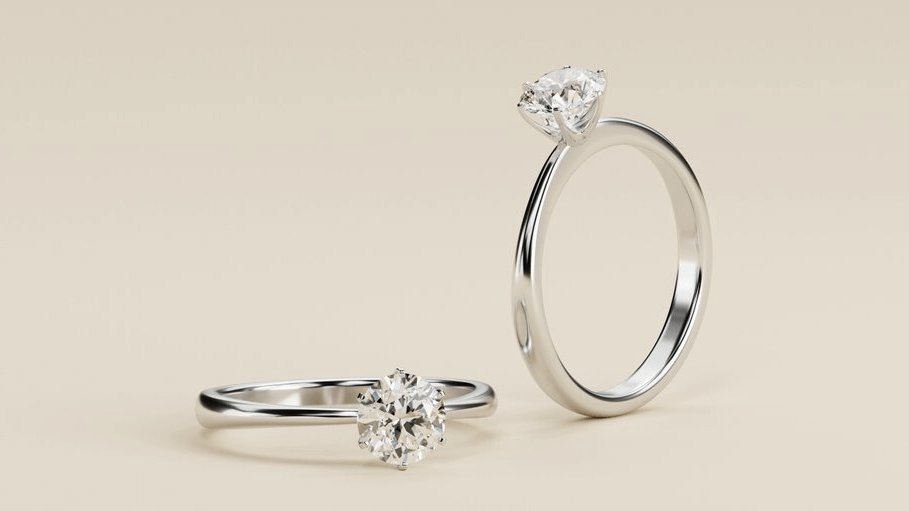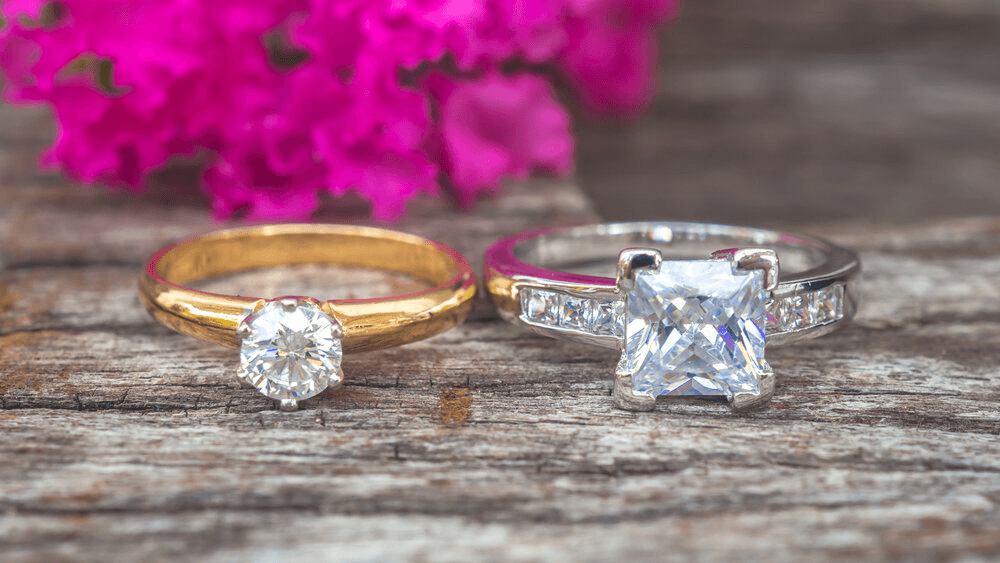Palladium Rings: Is the Hype Worth the Luster?

By Gary A.

Edited by Olivia H.
Published Nov 14, 2021
Edited on Dec 18, 2024
When it comes to finding a unique yet elegant option for your engagement ring, a palladium engagement ring offers a blend of modern style and timeless beauty that’s hard to resist.

- 7 Quick Tips for Buying a Diamond Palladium Engagement Ring
- Introduction
- Palladium: The Basics
- The Growing Popularity of Palladium Engagement Rings
- Palladium vs. Gold and Platinum
- The Market Value of Palladium Jewelry
- The Benefits of Palladium
- Our Expert Take
- 10 FAQs
Before we dive deeper into the specifics, here are some practical tips to help guide your decision-making process:
7 Quick Tips for Buying a Diamond Palladium Engagement Ring
- Tip 1: Assess Metal Color and Appearance Palladium: Recognize palladium’s natural white sheen, which is similar to platinum but lighter in color than white gold. Platinum vs Palladium: Platinum is denser and has a slightly darker hue compared to palladium. Gold: Note the distinct yellow tint of gold, even in white gold (alloyed with other metals).
- Tip 2: Consider Metal Weight and Comfort: Understand that palladium is lighter than platinum, which can be a comfort factor in daily wear. Platinum rings will feel heavier, a preference for some who associate weight with value. White gold, being alloyed with metals like nickel or palladium, offers a balance between weight and durability.
- Tip 3: Gauge Durability Based on Lifestyle: Palladium and platinum are highly durable and resist scratches better than gold. Consider lifestyle and daily activities; for high-activity lifestyles, palladium or platinum might be more suitable.
- Tip 4: Understand Maintenance Needs: Palladium does not tarnish but develops a patina over time, which can be professionally polished. Platinum also develops a patina and might require occasional polishing. White gold may need re-plating over time due to wear and tear.
- Tip 5: Compare Costs and Long-Term Value: Be aware that palladium, while rare, may be more cost-effective than platinum but more expensive than gold. Platinum offers a prestigious choice but at a higher cost. Consider the long-term value; palladium and platinum maintain their worth over time, similar to gold.
- Tip 6: Factor in Metal Allergies: Palladium and platinum are hypoallergenic, making them suitable for sensitive skin. Be cautious with white gold, as it may contain nickel, which can cause allergic reactions. Diamond Setting and Metal Interaction
- Tip 7: Examine Diamond Setting Compatibility: Ensure the diamond is securely set; palladium and platinum offer strong settings due to their malleability. Check for any loose settings, especially in softer metals like gold. Consider the color contrast; the whiter the metal, the more it can enhance the diamond’s brilliance.
Now that you’ve got these practical tips, use Jeweler AI below to find the perfect engagement ring that suits your style and budget:
Introduction
We frequently talk about the benefits platinum, a precious metal with a stark, almost-luminescent brightness, for engagement rings and other pieces of bridal jewelry. Its incredible, satin-like finish and celestial luster make it a truly striking choice – and, despite its relative rarity, it is still easy for shoppers across the US to get their hands on, though for a premium price.
Nevertheless, despite the popularity of platinum, there is another metal that shoppers are likely to come across during their search: palladium. In many ways the identical twin of platinum, palladium is significantly stronger than white gold, though not quite as strong (or as weighty) as platinum, it appears to be a pretty solid choice for engagement rings and wedding jewelry.
Still, there are a few factors you ought to consider if you’re tempted by this precious metal – and a couple of compelling reasons to stick with platinum.
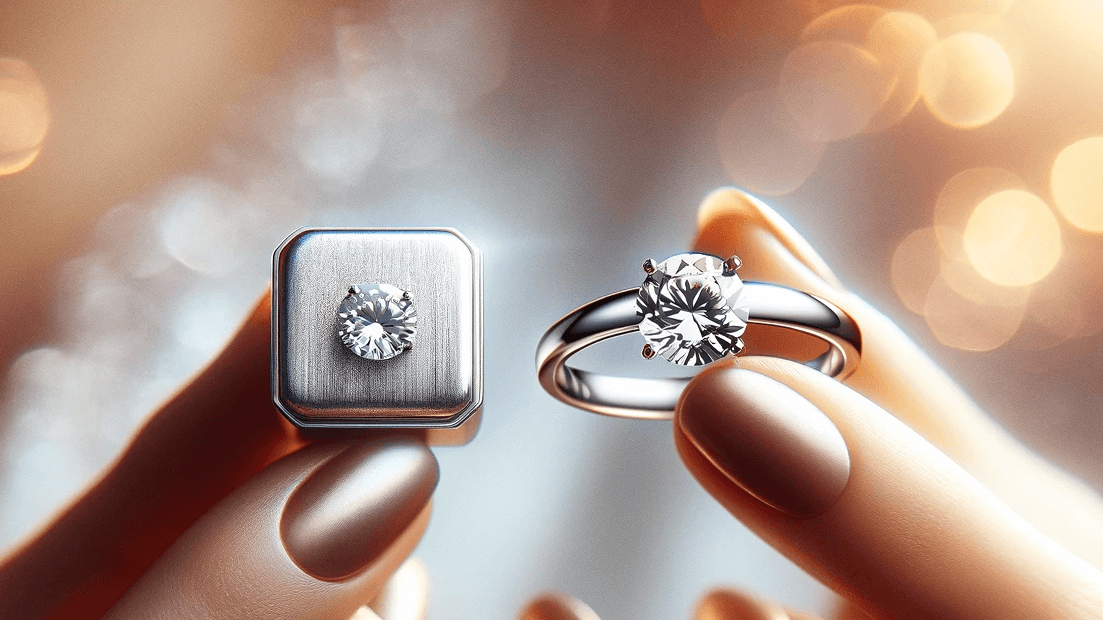
Palladium: The Basics
Palladium is a precious metal, first used in the creation of jewelry in the 1930s. In fact, its main uses tend to lie in some of the less romantic industries – car manufacturing, dentistry, and the creation of surgical equipment, to name just a few.
It is primarily prized for its resemblance to platinum. In fact, even jewelers will struggle to tell the two metals apart right away, since they are so similar in appearance. For some, the lighter weight of palladium is seen as a significant pro – although, for others, this is seen as a con.
The difference between palladium and white gold is far more noticeable since white gold carries a warmer hue due to the presence of yellow gold within the alloy.
The Growing Popularity of Palladium Engagement Rings
Palladium is used in the creation of engagement rings, particularly when the buyer wants to create as lightweight a ring as possible, and in wedding bands.
Palladium’s relative popularity is largely down to the fact that, until recently, it was more affordable than platinum.
Platinum is used at a much higher level of purity than white gold – typically more than 95%, compared with the 75% purity of 18k white gold, or the 58% purity of 14 karat. This means that, despite its lower market value than gold, rings created from platinum are considerably more expensive. For engagement rings in particular, their radiant appearance is often regarded as the perfect complement to a clear diamond, as in the case of this dramatic Marquise Engagement Ring in Platinum.
So, palladium – undeniably similar in appearance – became popular.
However, palladium is considerably rarer than gold and platinum. Its value for other industries means that it is much harder to get a hold of than either of these two precious metals, and its use in jewelry is growing less frequent.
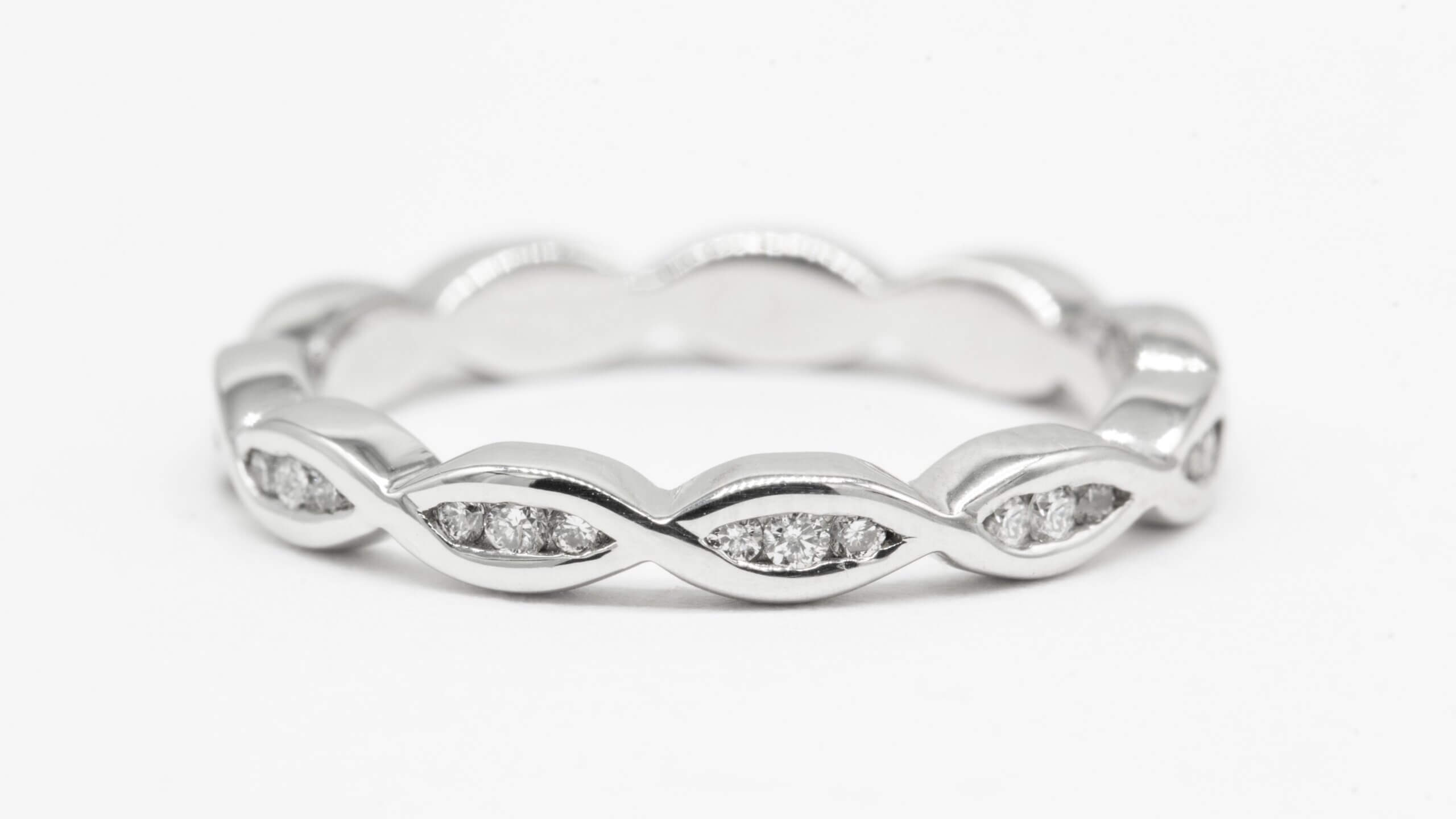
Palladium vs. Gold and Platinum
While it holds some advantages over gold, it’s unlikely to ever be considered superior.
First off, palladium can’t rival the warm hues of yellow, rose or even white gold, which is something many shoppers value over the stark whiteness of platinum and palladium.
Secondly, it’s rarer and, as we mentioned above, much harder to track down than gold. As a result, many jewelers have limited experience in dealing with this metal, making it a much more time-consuming option.
Cultural Significance
Finally, there is a social and sentimental significance to gold that many of us would consider irreplaceable. Throughout millennia, gold has been regarded as the most valuable, beautiful, and meaningful of the precious metals, and it holds value that goes far beyond its appearance and durability. Despite the fact that gold is used at a much lower purity in jewelry, there is a certain prestige to saying, ‘It’s made from white gold’ that cannot be replicated when we talk about palladium.
One advantage palladium holds over gold is its ability to be worn by those with allergies to alloy metals like copper and nickel. Since gold has to be alloyed for strength, it can be hard to find an appropriate ring if your partner suffers from allergies.
Then again, platinum is also regarded as an excellent choice for allergy sufferers. It’s not as rare as palladium, and jewelers are more experienced at working with it. The platinum vs palladium debate is a little tougher but often comes down to availability.
The Market Value of Palladium Jewelry
In recent years palladium’s rarity has afforded it a similar price tag to platinum.
As a result, if your budget is substantial enough to accommodate this metal, we’d recommend that you opt for platinum instead. Palladium doesn’t pose a significant rival to platinum and, as you might have noticed, tends to match platinum rather than surpass it – both in terms of strength, durability, and beauty.
If your budget is a little more restrictive, then a 14k poses a true rival to Palladium. True, it lacks the luminescent whiteness of palladium, but this will be most noticeable when you’re comparing the two metals side by side – not when it’s worn on the finger, and reflecting the warmer undertones of the wearer’s skin.
So, yes, palladium is worth a lot to the right buyer – but we’re not convinced that the average shopper looking for an engagement ring really is the right buyer for palladium, and, in most cases, we’d steer our readers toward platinum and white gold instead.
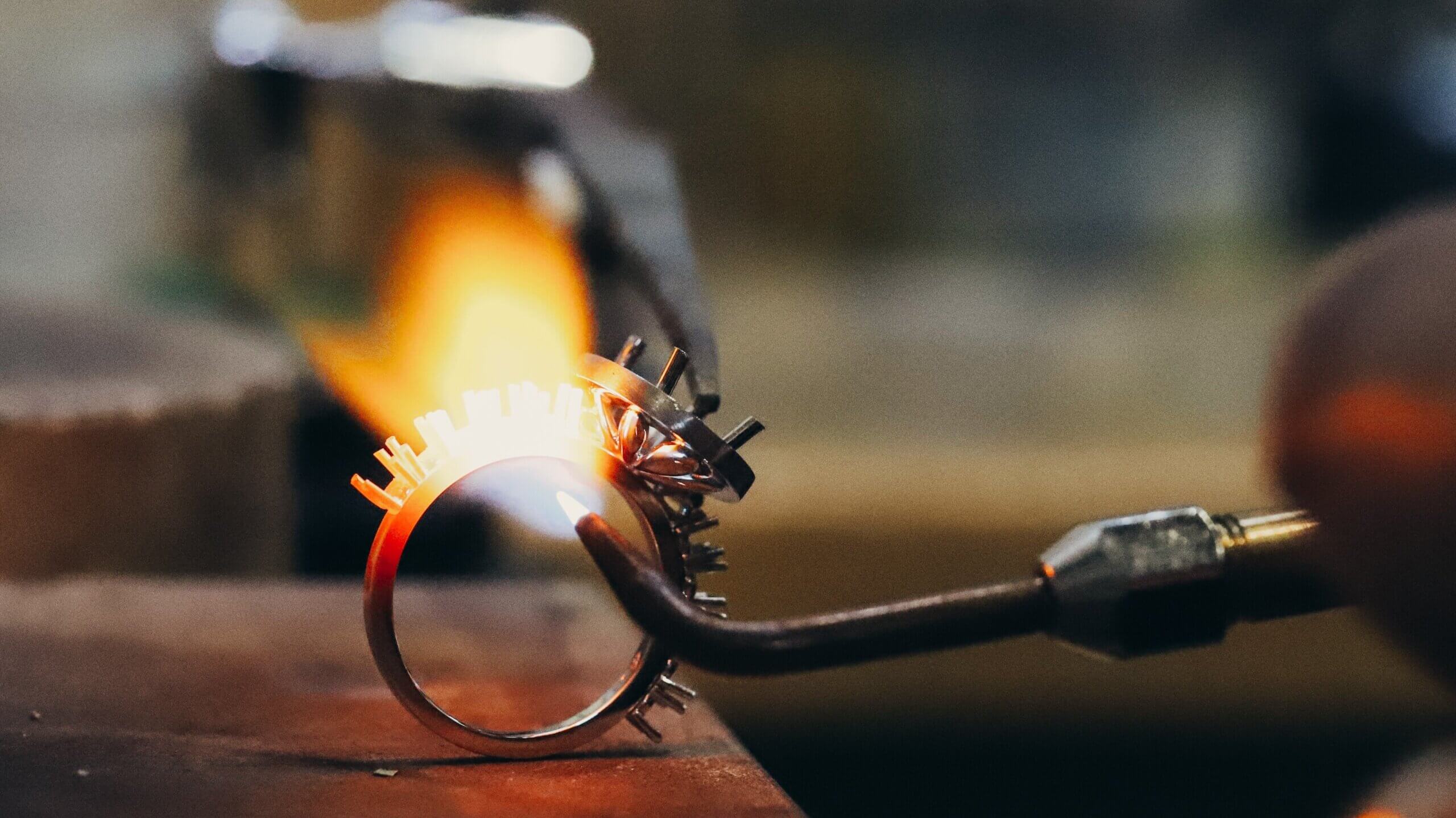
The Benefits of Palladium
Palladium isn’t the most practical choice, but there are some positives to choosing this metal.
Hypoallergenic Properties
There are some big benefits to using pure metal for your engagement ring. Skin turning green from jewelry is down to a reaction between your skin’s natural acidity levels and the copper found in some jewelry. Rose gold, for instance, can turn some people’s fingers green – although this does not pose any issue to the wearer’s health.
Palladium jewelry will not be alloyed with copper, since doing so would disrupt the bright sheen shoppers’ value in this metal.
The Tarnish Resistance of Palladium
One definitive advantage to palladium is its ability to resist tarnishing – much like platinum.
The metal will develop a patina over time. In both palladium and platinum, this is seen as a positive sign of age and, while it takes away some of the original sheen of the metal, it creates a satin-like quality that can only be achieved through many years of wear.
Besides, a patina can be easily removed by a jeweler.
Our Expert Take
Palladium is an interesting choice, but it’s not significantly better than platinum, or even a strong 14K or 18K gold. Opt for this one if the opportunity arises and you love the unique vibes this metal brings, but consider the alternatives if you’re struggling to find exactly what you want.
10 FAQs
- Q: Is palladium a good choice for engagement rings?
- A: Yes, palladium is an excellent choice for engagement rings due to its natural white color, durability, and hypoallergenic properties. It’s also lighter than platinum, making it comfortable for daily wear.
- Q: How does palladium compare to platinum and gold in terms of cost?
- A: Palladium is generally more affordable than platinum but can be more expensive than gold. Its rarity and unique properties often determine its market price.
- Q: Can palladium jewelry tarnish over time?
- A: No, palladium does not tarnish. However, it can develop a patina over time, giving it a slightly matte finish, which can be polished to restore its original sheen.
- Q: Are there any downsides to choosing palladium for jewelry?
- A: The main downside is its rarity, which might limit design options and availability. Also, not all jewelers are experienced in working with palladium, which can affect resizing and repairs.
- Q: How does the weight of palladium jewelry compare to platinum or gold?
- A: Palladium is lighter than platinum, making it more comfortable for some wearers. It’s similar in weight to white gold, depending on the alloy composition.
- Q: Is palladium suitable for people with metal allergies?
- A: Yes, palladium is hypoallergenic, making it an ideal choice for people with sensitive skin or allergies to other metals like nickel found in some gold alloys.
- Q: How does palladium impact the appearance of diamonds in jewelry?
- A: Palladium’s bright white color can enhance the brilliance and sparkle of diamonds, similar to platinum, making it an excellent choice for diamond settings.
- Q: Does palladium require special care or maintenance?
- A: Palladium is low-maintenance compared to other metals. It doesn’t tarnish but may need occasional polishing to maintain its luster.
- Q: Can palladium rings be resized easily?
- A: Resizing palladium rings can be more challenging than gold or platinum due to its tough nature. It’s important to consult with a jeweler experienced in working with palladium.
- Q: Is palladium a good investment compared to gold or platinum?
- A: Palladium can be a good investment due to its rarity and demand in various industries. However, market values can fluctuate, so it’s wise to consider personal value and use over purely investment potential.
Explore the elegance of palladium jewelry with Jeweler AI – where precision meets passion.
FOLLOW-UP GUIDE SERIES

